AOI 50th anniversary – 5 major achievements
Highlights and turning points across five decades of our organisation.
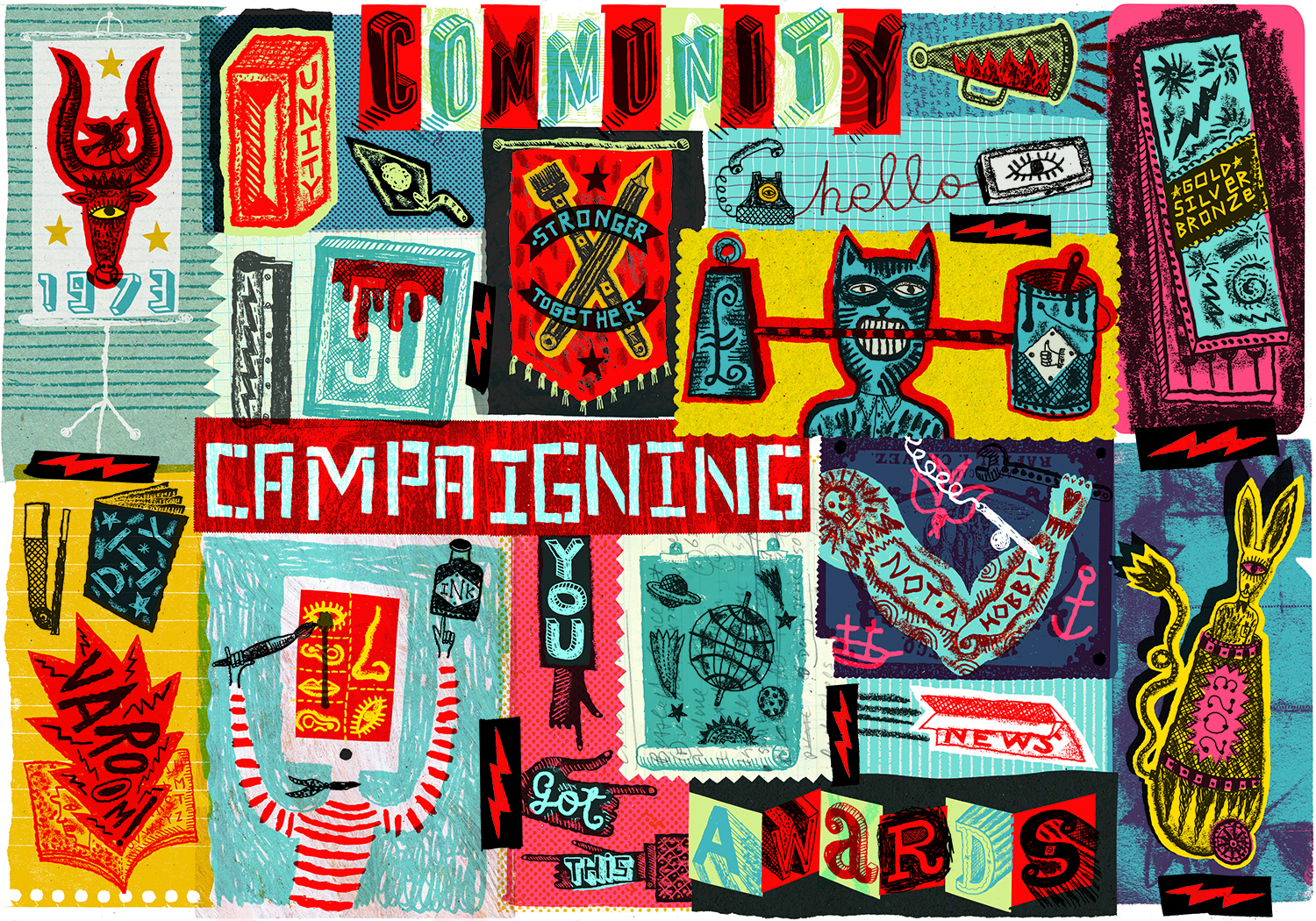
Our members are great! They are illustrators who recognise the importance of an organisation which is able to assist with all areas of their business and careers, and also that by supporting the AOI they are contributing to a better environment for all those who want to generate income from their illustration skills.
That working environment wasn’t so great fifty years ago in 1973, but the formation of the AOI in that year started changing many things for illustrators – AOI Patron, Chloë Cheese remembers, ‘Before the AOI all those difficult questions about rights and fees could only be answered by anyone we knew with practical experience’ – and over the last five decades the organisation has hugely improved the treatment and working practices for those making income from creating artworks for clients.
We’ve chosen five areas which have been major achievements for the AOI since its beginnings as a small organisation run solely by volunteers. And talking of volunteers, we’d like to give a shout out to all those hundreds of illustrators, agents and others in the industry who have given their time and energy to start, maintain, keep on its feet, and support in myriad ways, ensuring that the AOI has ultimately thrived through the ups and downs of its long history.
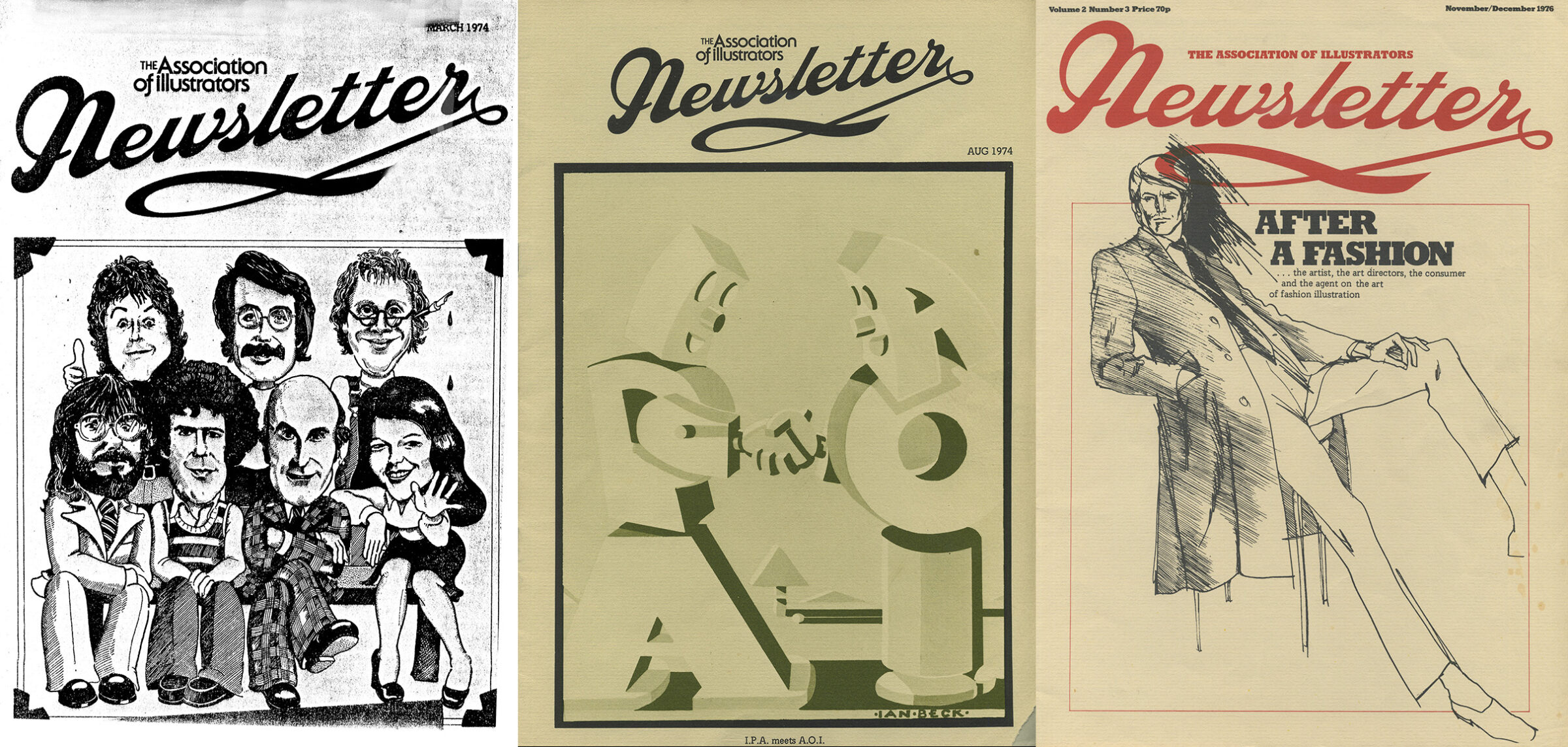
1. Campaigning – From return of Artwork (1970s) to AI responses to Government (2020s)
In current times, where nearly all illustration commissions are supplied to clients as digital files, it can be hard to imagine the effort required in the 1970s (and 80s and 90s) to deliver your artwork. You’d be wrapping it up safely with lots of cardboard and taking to the Post Office or handing over to a motorbike courier, or if you were not too far from the client’s office you’d take in yourself and stand there as the art director checked your image out. This could be a bit nerve wracking, but it meant you had immediate feedback, and importantly could tell if they loved it! It also helped build up personal business relationships.
Although this physical artwork was precious stuff, over the years clients rarely returned it, believing they owned the work. Amazing illustrations might languish in drawer chests, disappear under someone’s arm, or even be disposed of. Not good. So when a small group of illustrators and agents got together to form the AOI, this was one of the first things they wanted to tackle. It took a while and much work, but it happened, and as result of that campaigning, illustrators ever since were able to insist on return of artwork. AOI even produced special artwork stickers to ensure clients were reminded of this fact.
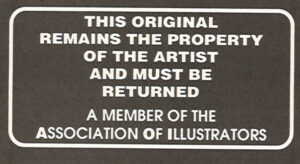
Fifty years later we are still at the forefront of campaigning to protect and enhance illustrators’ rights. The recent, significant challenges of generative Artificial Intelligence (machine learning) – how it is trained on the scraping of images from the internet, and what the impact may be on commissioning practice – are a major focus of our campaigning work, liaising with other groups who represent creatives, and significantly feeding the illustrator’s view to Government.
2. Illustration as a Business – Acceptance of Commission form
Artists want to create. Some love to make images and to also run the business side of their career, but quite a few find this aspect of the freelancer’s life less engaging. However you look at it, focusing on the professional as well as the creative is essential.
One of the most important elements in ensuring an efficient and smoother running business is to make sure that both the artist and the client understand what the commission is all about, and have all those details written down and made legally binding. AOI has advised members on the business side of illustration throughout its 50 years, with the most useful element being the production of a comprehensive document covering licencing for the artwork and the terms and conditions under which the job will operate.
Producing this was one of the first things that the original committee of the AOI worked on, with the document being improved upon down the years. In 1973 it was called the Standard Job Acceptance Form; now members have access to what is currently called the AOI Illustrator Commissioner Agreement.
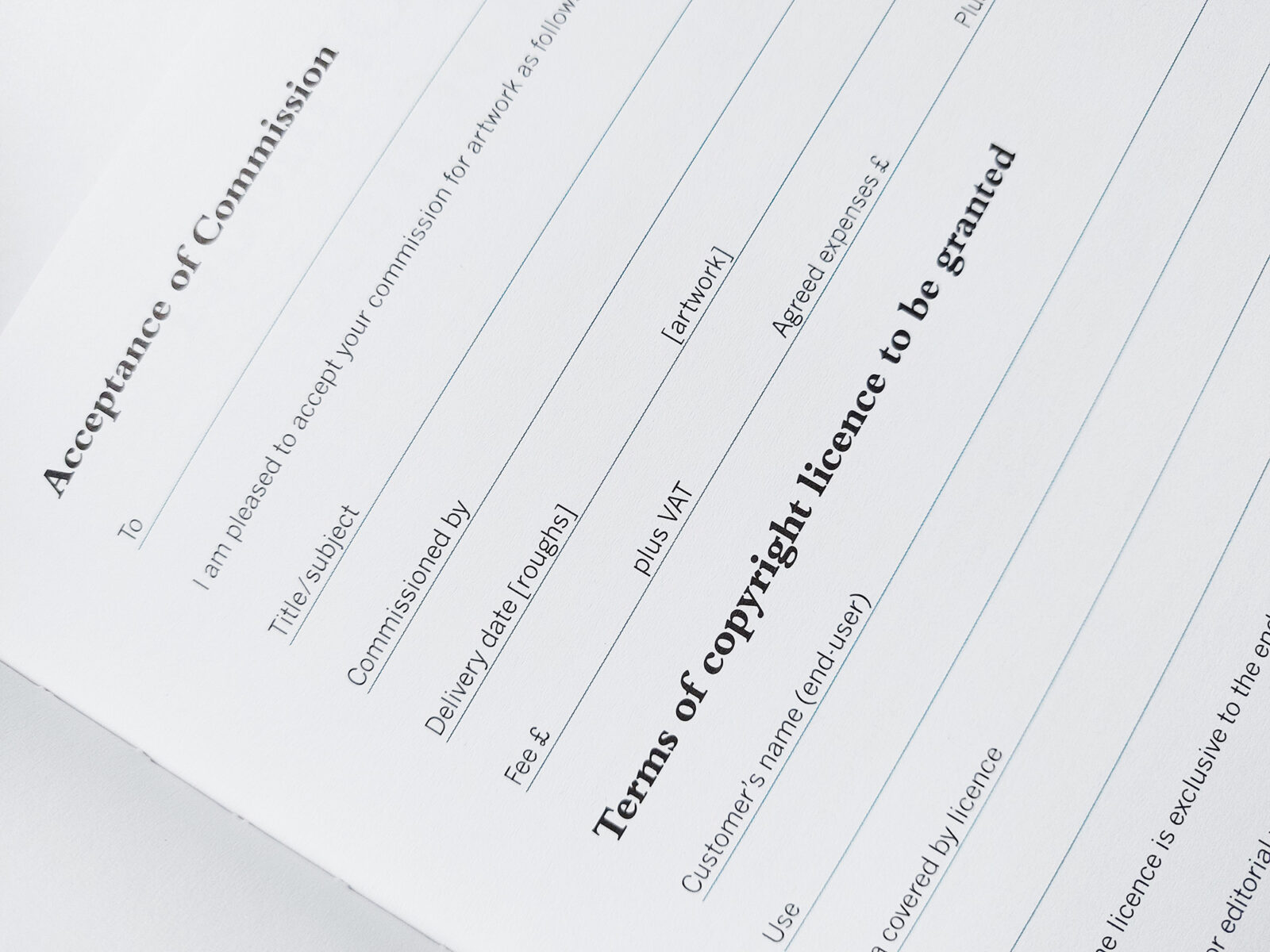
That ready-made Acceptance Form represented a major step in helping all illustrators produce a clear, detailed document for their clients, undoubtedly saving many artists from the potential complications that can arise when there is no paperwork in place for a commission (and nothing there’s nothing in writing to reference for evidence should things go wrong).
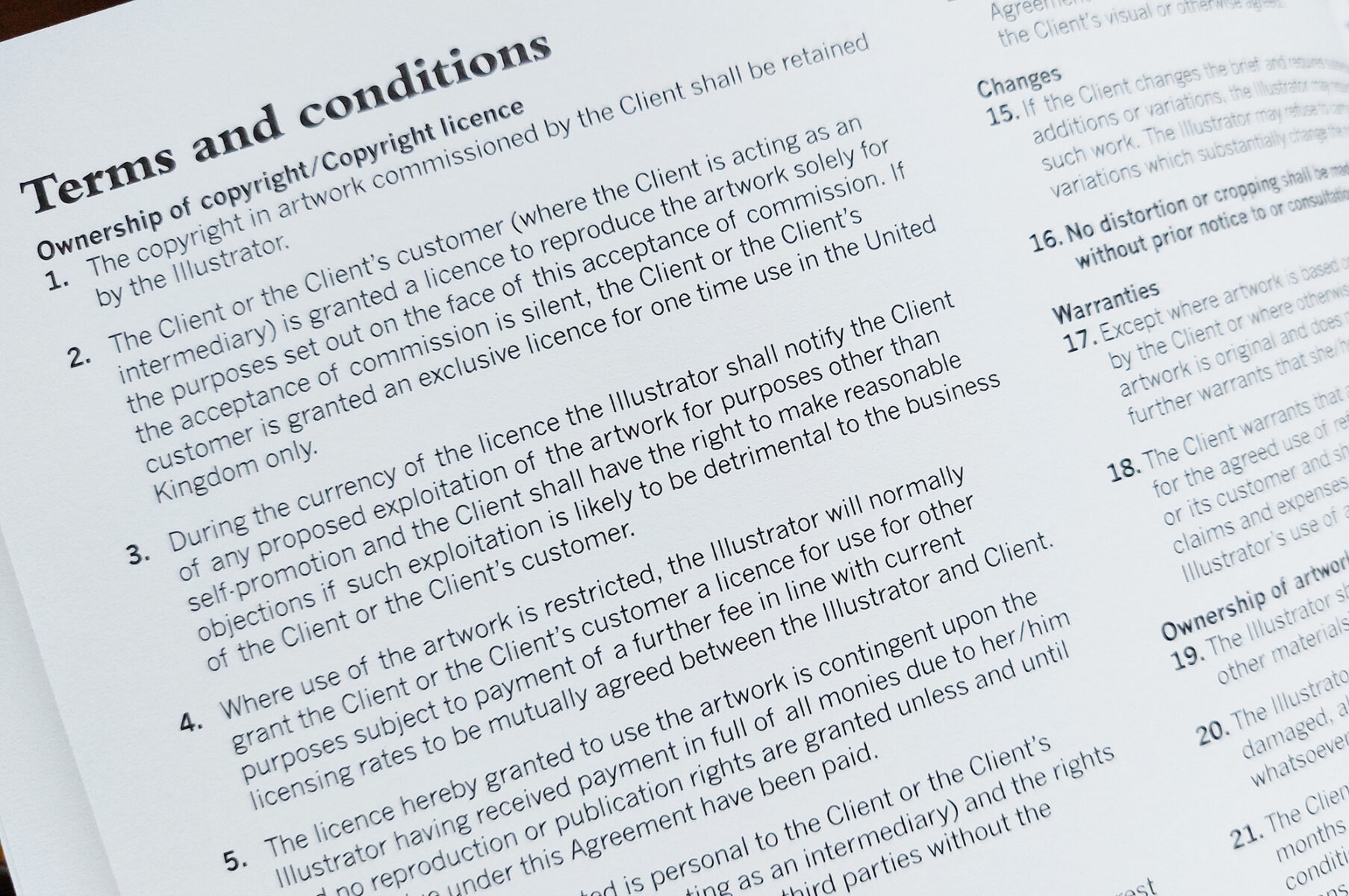
3. Helping Illustrators Promote – From slides to Folios and Competition.
No-one is commissioned if art directors don’t see their artwork, and in the 1970s, as in the decades before, illustrators either had to call up and organise a face-to-face meeting with an art director, drop their portfolio off at reception to be viewed and collected later, or when it was available, pay to go into an illustration annual that was distributed to commissioning clients.
To help facilitate art directors wanting to see a large range of illustration work, the AOI started a collection of members work which could be viewed at their office. This was far from sophisticated from the point of view of 2023, being basically a few slide projectors with loads of carousels of slides for art directors to sit in front of. But it fulfilled an important role in offering illustrators the opportunity to promote their work in addition to making individual contact.
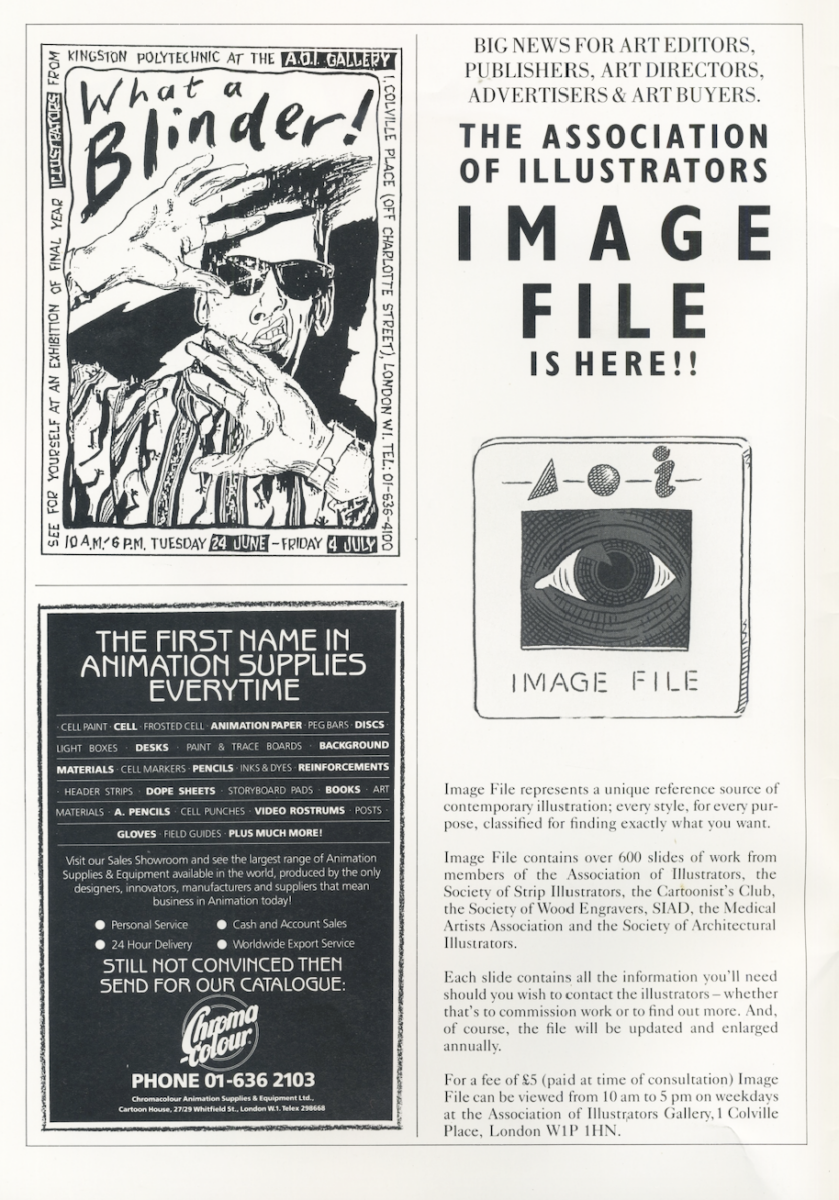
Once a website was in place in the late 1990s, AOI continued to aid illustrators in getting their work in front of commissioners, launching a collection of published illustration work from all areas of the industry in early 2003. Called AOI Image File, it contained over a thousand images making it ‘an ideal place for art directors to find the illustrator best-suited to their current project’.
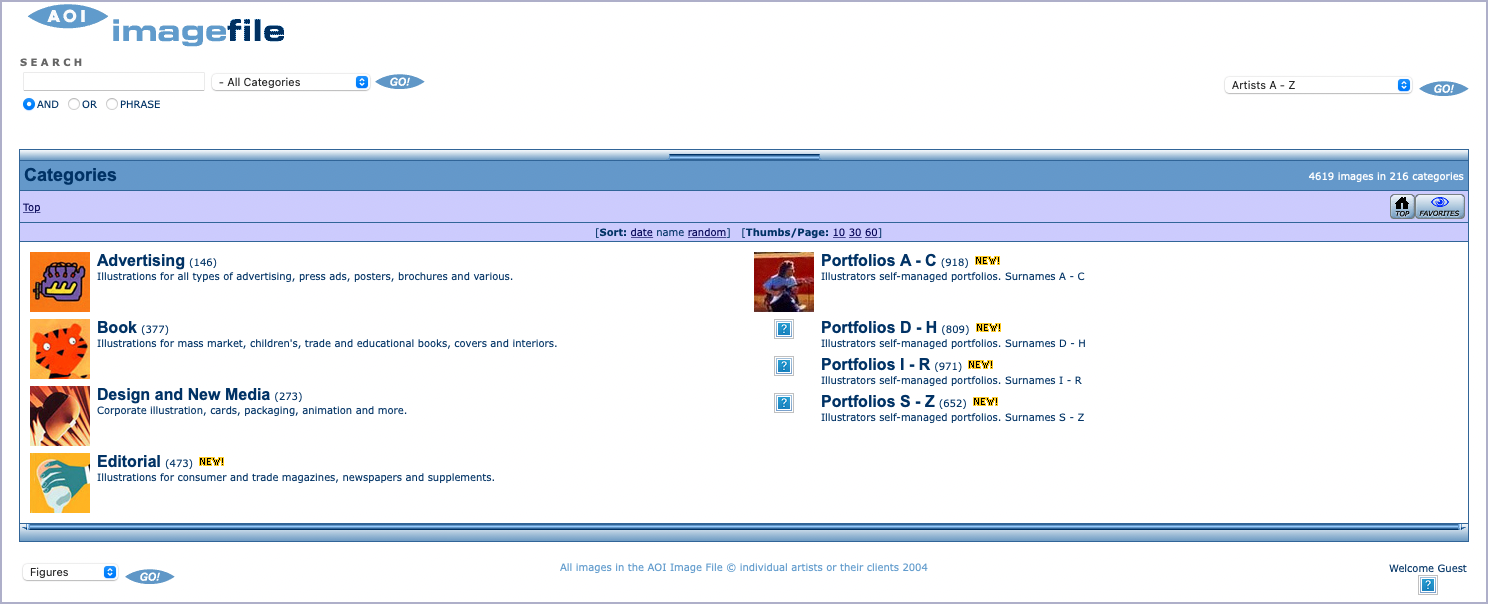
Later the online collection was re-named AOI Portfolios, and it’s now the AOI Folios with over 1600 portfolios for commissioners to peruse for the perfect illustrator for their job.
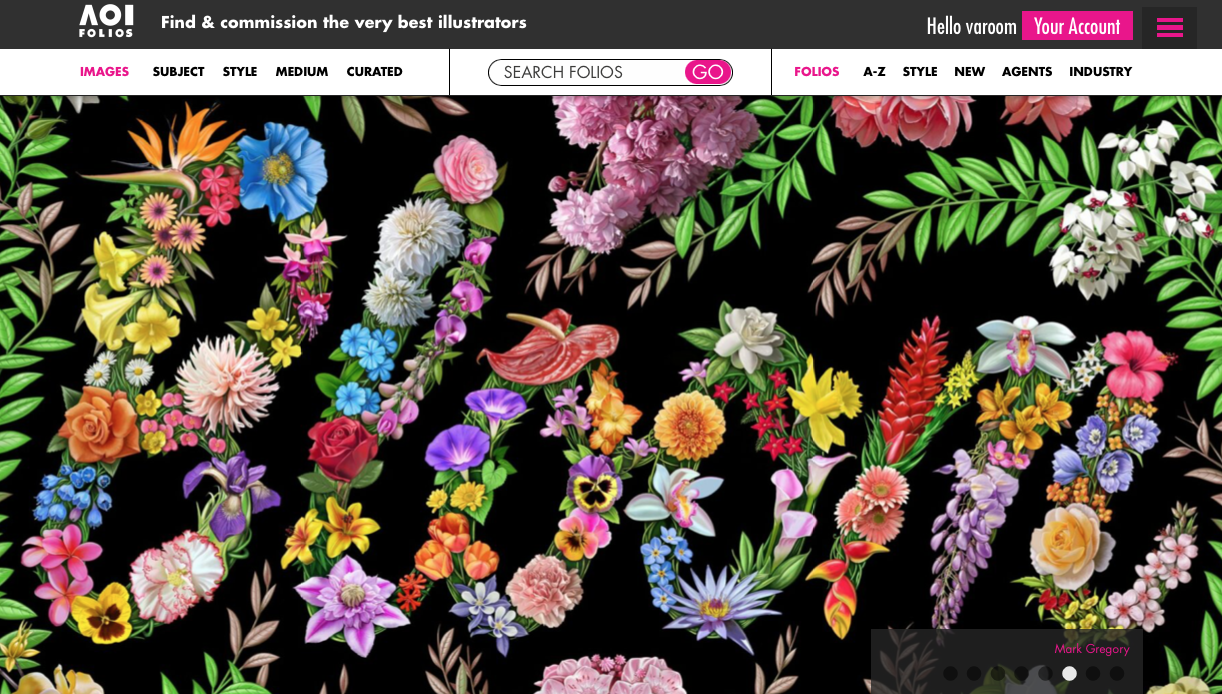
4. Enhancing the reputation of illustration
We all know that illustration is an amazing, powerful art form that serves clients and also includes individuals’ authorial work – which is not always commercially focused. That viewpoint has not always been shared, and the AOI has been a pivotal element in enhancing the reputation of the artform.
This has been done over the years by launching and sustaining an annual illustration competition, exhibitions and events, plus tours of the competition exhibition. From The Best of British to the World Illustration Awards the AOI’s competition is truly international, and is touring China through 2023.
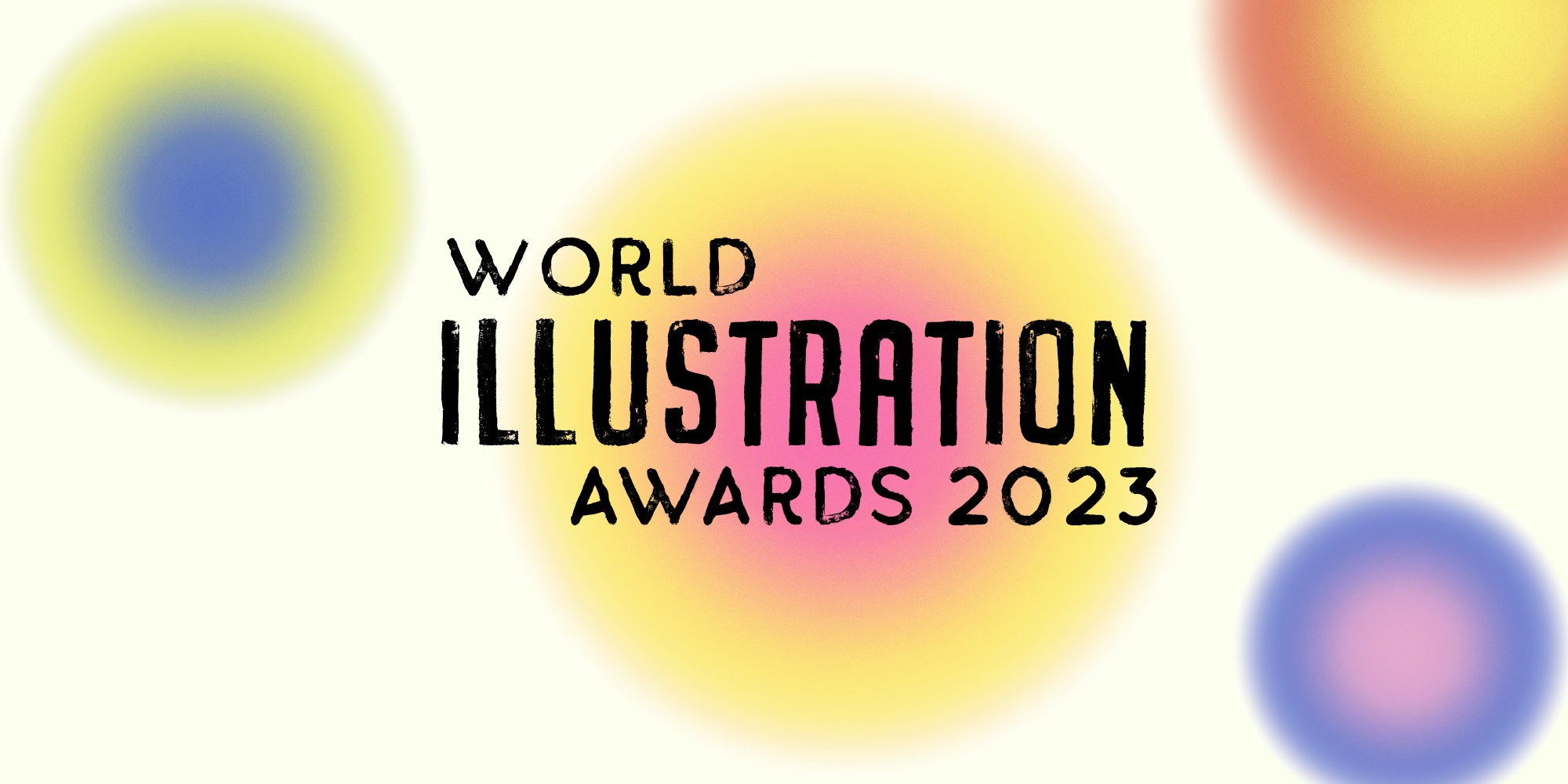
The AOI’s competition also produced the vital companion catalogue which was mailed to commissioners, encouraging an appreciation of a broader range of illustrative approaches.
Another benefit the AOI has brought has been the creation of publications for original writing on illustration to explore the artform in all its variety, from the original 1970s Newsletter through Illustrators magazine, The Journal, and Varoom in the 21st Century.
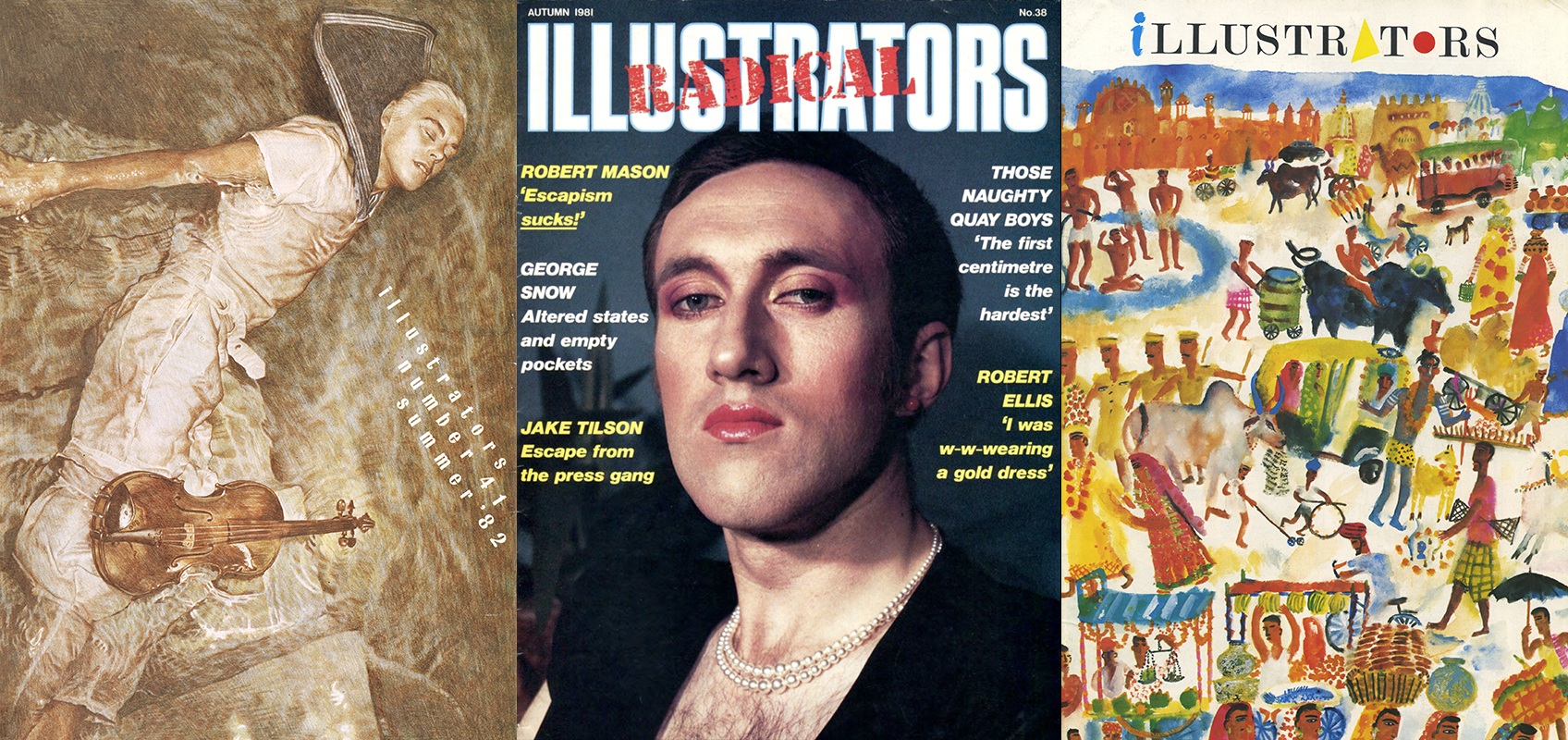
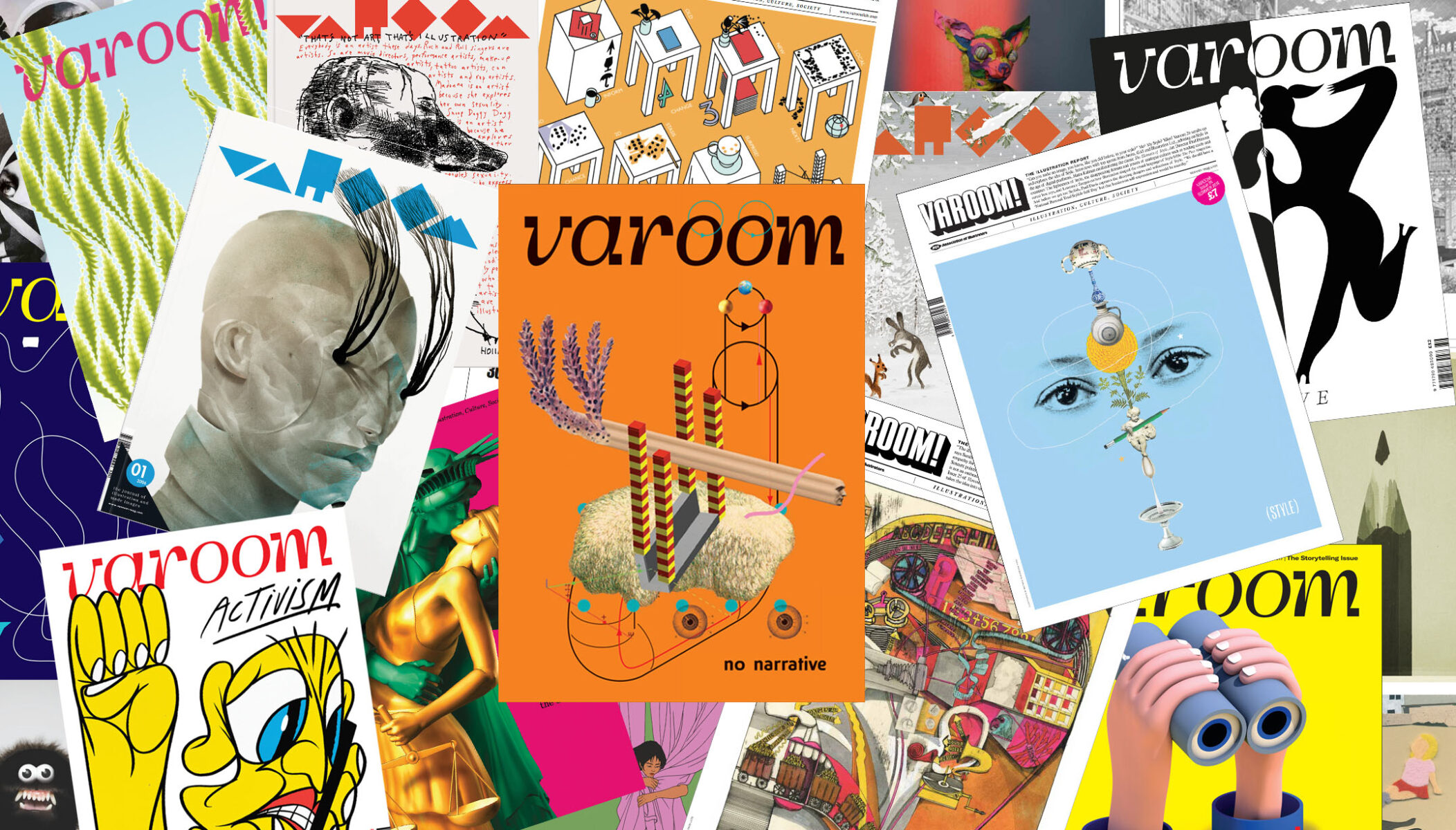
Varoom magazine was also the spur for the creation of the illustration research project, VaroomLab. Spearheaded by Jo Davies, the research group held four fascinating symposia from 2012 hosted by university members across the UK, leaving a legacy of four published journals of papers.
5. Having illustrators’ backs!
From the start, the AOI always had the aim of supporting illustrators in their business dealings and self-promotion, recognising that there wasn’t any other body that would do this for the people creating wonderful artwork to cover books, sell products, enhance articles, inform animation styles and so much more.
Staff of the organisation have always included those with an in-depth knowledge of the illustration industry, with working or previous illustrators employed, and with staff often coming to the AOI from an illustration agency background. This understanding and grounded experience, backed up by experienced Board members, has meant that the organisation can offer support and advice from a realistic perspective. We know that members appreciate this and understand that the AOI is there to do whatever we can to help them achieve their goals – from general advice, contract reviews, support with licensing and helping with promotion.
It’s a pleasure to know we have illustrators’ backs!
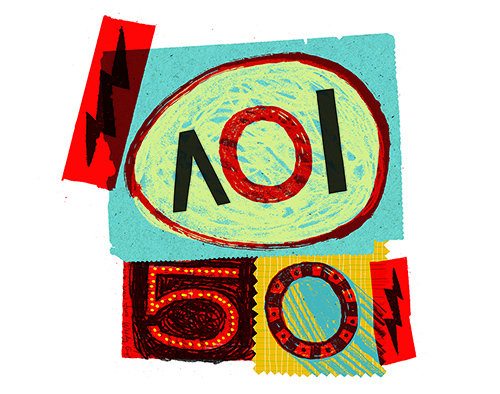
We are thrilled to be celebrating the 50th anniversary of the AOI and the significant contributions we have made to the illustration industry over the past five decades. From campaigning for illustrators’ rights to helping them run their businesses and promoting their artwork, the AOI has been an invaluable resource for illustrators worldwide. We are grateful to our dedicated members, volunteers, and industry partners who have supported us in our mission to build a confident and connected illustration community. As we look to the future, we remain committed to providing 1-1 support to illustrators, as well as advocating for their collective rights. The industry has come a long way over the past 50 years and will of course continue to evolve. The AOI will be here as a guide to help illustrators navigate shared challenges and engage with new opportunities on the horizon.
Rachel Hill, CEO
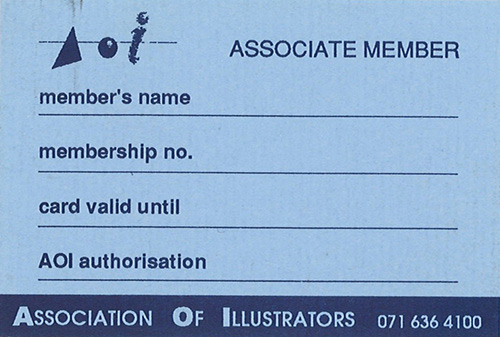
AOI 50th Anniversary illustration and logo by Jonny Hannah
More on our Anniversary:
AOI 50th Anniversary – Here for the members! Fifty years of support for illustrators
AOI 50th Anniversary – Got your back! Campaigning AOI’s achievements for all illustrators
AOI 50th Anniversary – Awards and Events From the first annual in 1976 to World Illustration Awards
AOI 50th Anniversary – I was there! Recollections from important AOI contributors
Back to News Page
